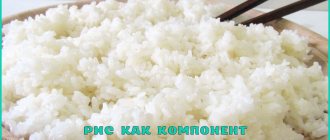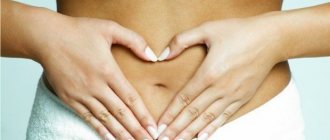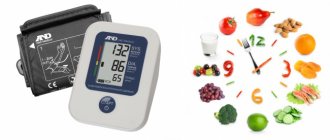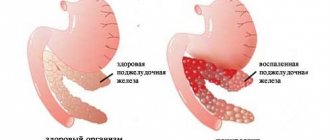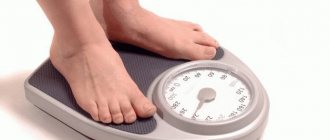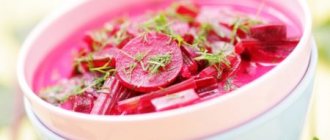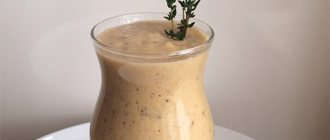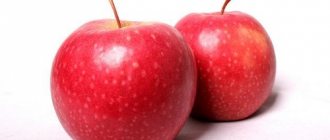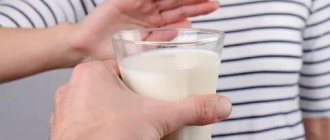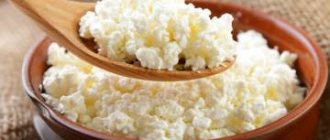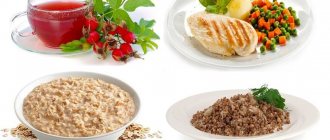Gastritis is a disease of the stomach caused by inflammation or irritation of its mucous membrane. The disease can occur suddenly (acute gastritis) with rapidly developing short-term symptoms (1-2 days), not necessarily severe. Chronic gastritis develops slowly and may have few or no symptoms (asymptomatic gastritis). Pancreatitis develops similarly. One of the ways to alleviate the condition and support treatment is a diet for pancreatitis and gastritis, based on the consumption of food that does not irritate these organs.
Why does the doctor prescribe a diet?
Pancreatitis involves the development of an inflammatory process in the pancreas, which is a consequence of the abuse of fatty and fried foods, carbonated and alcoholic drinks. The diet is prescribed by a doctor to reduce the load on the gland.
Pancreatitis is often accompanied by gastritis, which involves inflammation of the gastric mucosa. The result of this is a disruption in the production of hydrochloric acid, which affects the digestive processes. To reduce inflammation, you need to follow a diet that the doctor prescribes to the patient.
Diet is an important component of the treatment of gastritis and pancreatitis. To reduce the load on inflamed organs, a number of products are excluded from the menu.
Basic Rules
For pancreatitis and gastritis, the basic rules for creating a diet are as follows:
- The diet should be five times a day: first and second breakfast, lunch, afternoon snack and dinner. Portion sizes are reduced.
- Eating dry food on the go is strictly not recommended.
- You should not eat in the last two hours before bedtime.
- Fried foods are excluded from the diet. It contains harmful components that have a detrimental effect on the pancreas.
What to give up
Patients with gastritis and pancreatitis should avoid baking. Borscht and rassolniki, as well as fatty goose and duck meat, and pork are prohibited.
Many vegetables are prohibited, for example, cabbage, which tends to irritate the mucous membranes of organs, as well as radishes and cucumbers. Mushroom-based dishes are limited. Alcohol, soda and any cheese are prohibited.
You should not eat fresh and rye bread, strong tea and coffee, fatty broths, canned food, sausages, and fast food.
What foods can you eat?
All dishes that make up the menu are prepared using products that are easily processed by the gastrointestinal tract. These include the following:
- jelly from non-acidic fruits and berries;
- green and weak black tea, rosehip decoction without sugar;
- steamed chicken egg dishes;
- low-fat broths (based on meat, fish, vegetables);
- fruit and vegetable purees (fruits and vegetables must first be boiled);
- porridge;
- steamed cutlets.
Bread made from premium flour is allowed in moderation, but it is better to replace it with breadcrumbs. From time to time you can treat yourself to a biscuit, but it’s better to eat yesterday’s cake, slightly dried out. Milk is also acceptable in small quantities, but the best alternative is low-fat kefir.
What is forbidden to eat if you have problems with the pancreas?
For diseases of the pancreas, the following are strictly prohibited:
- alcohol-containing drinks (including beer, balms, tinctures);
- rich broths from meat, fish, cabbage;
- spices, hot seasonings;
- lard, margarine;
- dishes made from fatty meats and fish,
- any canned food, pickles, smoked meats;
- fresh bread and pastries (cakes, buns);
- candies, chocolate;
- from greens sorrel, cilantro.
All carbonated drinks, black tea, coffee are contraindicated. Nutrition during each exacerbation of the disease begins with a period of hunger. If long-term fasting is necessary, the patient is fed by injecting special solutions into a vein. Then vegetable soups and liquid porridges are allowed. When the patient's condition stabilizes, the diet is expanded.
Sample menu for the week
Despite the fact that with gastritis and pancreatitis many foods need to be excluded, the menu can be quite tasty and varied. It must be drawn up by a doctor. Below is an example of a weekly diet.
Monday
- Breakfast: pilaf based on dried fruits;
- Second breakfast: biscuits and tea;
- Lunch: vegetable soup (with grated carrots and pumpkin), fish soufflé, currant broth;
- Afternoon snack: strawberries and low-fat milk;
- Dinner: eggplant and zucchini stew with boiled veal, a glass of compote.
Tuesday
- Breakfast: cheesecakes;
- Second breakfast: a couple of baked apples;
- Lunch: soup with chicken breast and noodles, baked zucchini, rosehip infusion;
- Afternoon snack: jelly;
- Dinner: baked fish, milk jelly.
Wednesday
- Breakfast: buckwheat;
- Second breakfast: cottage cheese with sour cream;
- Lunch: soup with rice based on vegetable broth, beef cutlet, tea;
- Afternoon snack: kefir;
- Dinner: chicken soufflé, jelly.
Thursday
- Breakfast: oatmeal;
- Second breakfast: soft-boiled egg;
- Lunch: vegetable puree soup, lean baked meat, a cup of tea;
- Dinner: boiled pollock, rosehip infusion.
Friday
- Breakfast: steamed omelette;
- Second breakfast: rosehip broth;
- Lunch: fish soup, beef dumplings with cottage cheese, tea;
- Afternoon snack: milkshake with strawberries;
- Dinner: pasta and broccoli casserole, jelly.
Saturday
- Breakfast: rice porridge with milk;
- Second breakfast: biscuits with tea;
- Lunch: vegetable soup, turkey chops, a small amount of marshmallows;
- Afternoon snack: beetroot and carrot puree with the addition of sea buckthorn;
- Dinner: steamed fish cutlets, currant broth.
Sunday
- Breakfast: poached egg;
- Second breakfast: pie with jam and tea;
- Lunch: vegetable soup, meat and egg roll, tea;
- Afternoon snack: smoothie with raisins and oatmeal;
- Dinner: boiled fish, rosehip broth.
Video on the topic: Nutrition for gastritis - basic rules of various forms.
Herbal decoctions for pancreatitis and gastritis
Various herbal decoctions, which have been used since ancient times, relieve inflammation and heal, so they can be used for gastritis and pancreatitis. Decoctions and teas are prepared from medicinal plants. Plants such as rose hips, plantain, yarrow, and St. John's wort have proven themselves well. It is better to use them diluted.
You should be wary of ready-made herbal teas sold in pharmacies. They may contain seasonings that are undesirable in inflammatory processes. Also keep in mind that any medicinal plant can provoke an allergic reaction.
Diet recipes
A diet for pancreatic disease requires skills in cooking. Organizing meals for a working person is much more difficult, since you will have to carry lunch and snacks with you, and look for a place to warm up. For young and inexperienced cooks, we provide examples of some dietary dishes with a description of the cooking process.
Vegetarian soup
We offer a recipe for soup with cereals and vegetables. For one serving you will need: 20 g of cereals (rice, oatmeal), half a glass of milk, one potato and carrot, a teaspoon of vegetable and butter. Pour clean cereal into boiling water and boil until fully cooked (time depends on the type of cereal).
Peel the potatoes and carrots, cut them, and simmer in another pan. Lightly add salt and mash into a puree with butter, mix well. Rub the finished cereal through a sieve, mix the broth with stewed vegetables, and add hot milk when boiling. It is better to put butter on a plate before eating.
Carrot and cottage cheese soufflé
Per serving you need 2 medium carrots, 50 g of cottage cheese, half a glass of milk, one egg, a tablespoon of semolina, 5 g of butter. After peeling, cut the carrots into small pieces and cook in milk until soft.
It needs to be rubbed together with cottage cheese, egg yolk, add semolina and mix well. Beat the egg white and fold it into the mixture. Place everything in the prepared mold for subsequent baking in the oven and steaming. Add a little honey or xylitol.
Steamed meatballs
Prepared from meat, trimmed of tendons and fat, and minced meat. Chicken or turkey will do. Per serving you will need 150 g of minced meat, 20 g of white bread pulp, and a little butter. White bread soaked in water and squeezed out is added to the finished minced meat, the whole mass is scrolled through a meat grinder twice. Small balls are formed and steamed. You can throw it into boiling water, add cereal and make soup with meatballs.
https://youtu.be/dG-skMegvik
Enzymes
Enzymes help the digestive organs cope with their direct functions. Gastritis and pancreatitis are precisely the reason for their lack. Special medications, the choice of which in pharmacies is extremely wide, can fill the gap. A popular medicinal enzyme is pancreatin. It is part of such drugs as Mezim, Festal and Creon.
Features of the diet during exacerbation
When pathologies worsen, the menu is slightly adjusted. One day a week should be devoted to therapeutic fasting. The next day, it is recommended to have a light breakfast, for example, oatmeal with water. Then you can eat as usual.
Complications possible if the diet is not followed
Proper nutrition for gastritis and pancreatitis helps normalize digestive processes and promote healing. If you do not follow the recommendations of a specialist and regularly violate the proposed menu, then there is a risk of pathologies becoming chronic or even oncological. The sooner you start treating diseases, the better - this way you can avoid many negative consequences.
General tips for organizing nutrition for pancreatitis and gastritis
Pathologies are not only acute and chronic. There is gastritis with high and low stomach acidity, and this will also affect nutrition. With high acidity, you need food that improves the production of gastric juice. At low levels, you need to avoid those products that can further damage the irritated mucous membrane. The main goal of a therapeutic diet is to give the stomach and pancreas maximum rest.
There are also the following rules for creating a diet:
You need to eat in small portions.
- Food can be steamed, stewed and boiled. Frying is excluded.
- Food should be moderately warm, never cold or hot.
- During an attack of gastritis, food should be pureed.
- You need to eat slowly, chewing your food thoroughly.
- It is recommended to eat at the same time every day.
Is it possible to consume honey?
A diet for exacerbation of gastritis and pancreatitis allows the use of honey as an independent product or as an ingredient when creating a more complex dish. The beneficial effects of honey are due to several factors:
- The ability to coat the walls of the stomach and regulate the amount of acid produced;
- Antibacterial action;
- Wound healing effect;
- Calming effect on the mucous membrane.
It stimulates digestion and normalizes stomach acidity. Thanks to this, honey is considered one of the few foods that can be eaten every day. It is important to observe the measure and not exceed the optimal amount (1 tablespoon).
